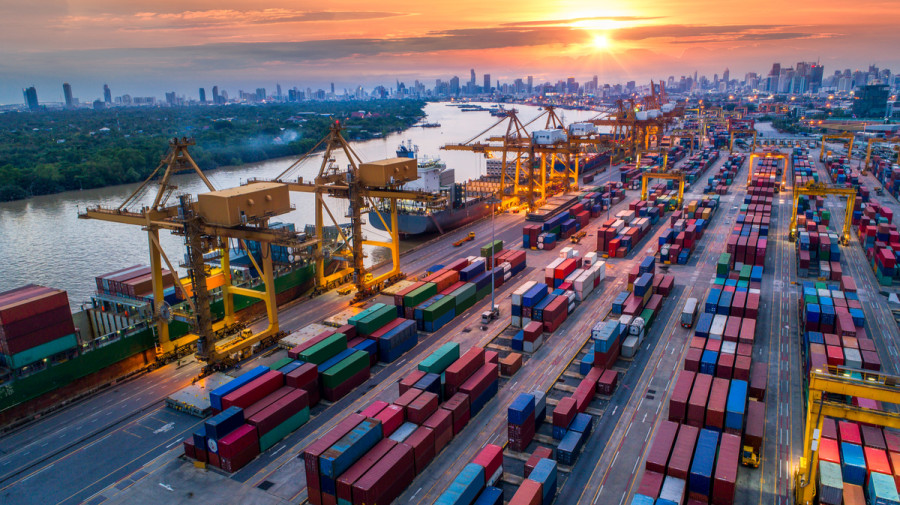Columns
Trading during a pandemic
World commerce will depend on the agility of exporters and their ability to innovate.
Bijendra Man Shakya
The Covid-19 pandemic has brought about widespread economic impacts owing to measures, like lockdown restrictions, taken by governments to control its spread. This has triggered the largest global economic shock since the Great Depression of the 1930s. Yet there is a marked difference between the two greatest economic shocks. While the Great Depression was caused solely by lack of 'effective demand' according to Keynesian economics, the recent recession has been attributed to both demand and supply shocks. Reduced employment and income have worsened the demand situation. Consumer demand has been concentrated on healthcare products, changing global demand patterns. Disrupted supply chains and the closure of non-essential industries have threatened employment and supply capacities everywhere.
Economic jolts
These twin effects will continue to exist in all economies irrespective of their development status at least through 2020. The effect of the pandemic seemed to be rapid and intense in the advanced economies resulting in massive layoffs and a stock market crash. Although relatively low in intensity, small and feeble economies including Nepal, have started to feel the economic jolts as the lockdown and other mitigation measures have been relaxed. No sector of the economy will be spared from the impact of this catastrophe as there will be spillover effects magnifying the original shock.
There is growing concern over the impact of the virus on the Nepali economy. The services sector, particularly travel and transport, have been hit the hardest. A paralysed tourism industry has led to a state of mass unemployment, and the hordes of returning migrant labourers from the Gulf countries have aggravated the problem. Studies estimate that the inflow of workers’ remittance has shrunk by about 29 percent or $2.32 billion this year, threatening the country’s external economic situation. Making conditions worse, there are signs of pessimism in the trade sector already beset with many challenges.
The World Trade Organisation has anticipated a downturn in global trade by 13 to 32 percent, the wide range caused by uncertainty of the economic impacts of the pandemic and lockdown. This is a steeper fall than the global financial crisis a decade ago. It further said that almost all regions would suffer a double-digit percentage decline in trade with exports from North America and Asia suffering the most. This is, without doubt, a daunting challenge for Nepal which is already struggling with dwindling exports.
Nepal has witnessed a fall in both exports and imports as a result of the stay-home order. Preliminary data illustrated a stagnant export performance between January and June 2020, representing the pre- and post-lockdown periods. There was a sharp decline in imports between the same periods, and the contraction in imports has reduced the trade deficit to some extent. Import trends can revert to normal with the relaxation of the lockdown supported by a rise in global commercial flights carrying air cargo, movement of containers and revival of export orders. However, improvements in these factors are not going to revive export transactions anytime soon. Strained by inherent weaknesses, factors like consumer behaviour and market access, and exporter ability to adapt to the changing trading environment will determine the export trend at least in the short to medium terms.
Regarding demand, the implications can be assessed in two ways. First, Nepali export products are not dynamic with regard to global demand. This means international demand for Nepali products is stagnant, and global demand may actually drop. Second, a majority of the products are non-essential items in terms of consumer preference, which means the consumption of such products can be easily postponed. So pricing as a tool to induce demand will be relatively ineffective in the current situation where the demand pattern is changing.
As a result, the products shipped to overseas countries which contribute hugely to Nepal’s export revenues will continue to see a steep fall. The country's major export products such as apparels, carpets, craft items and herbal remedies are vulnerable. But exports to India will be comparatively more resilient as the products shipped to the southern neighbour are basically agricultural and consumer items, which are of an essential nature or are used as inputs for further processing. They include products like large cardamom, ginger, tea, palm oil, yarn, and iron and steel.
Protectionist sentiments
In a situation like this, there is a possibility of rising protectionist sentiments prompted by a slowdown in global economic growth. A turn towards protectionism will encourage enforcement of non-tariff barriers, for example, tough health and sanitary standards citing the pandemic. This will not only obstruct global market access but also reduce trade efficiency. Furthermore, the inability of Nepali exporters to adapt to international products and marketing will probably create more uncertainties in export trade.
It is expected that there will be a quick V-shaped recovery in the global economy. The World Trade Organisation has forecast that merchandise trade will rebound by 21 to 24 percent in 2021, depending on how rapidly the pandemic recedes, and how well countries coordinate their joint policy responses. Hence, trading in the pandemic will depend on the agility of exporters and their ability to innovate. Adoption of digitalisation in trading is another important factor to be considered as the outbreak has led to structural shifts, including changes in customer preference and supply chains. Thriving in the new reality will depend on the response of Nepali traders to these interrelated components, and the actions taken to resolve the deeply rooted problems in the country’s export sector.




 20.59°C Kathmandu
20.59°C Kathmandu














